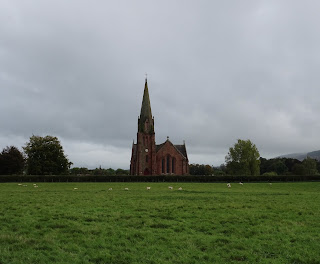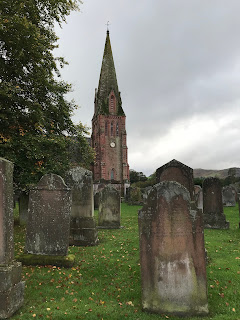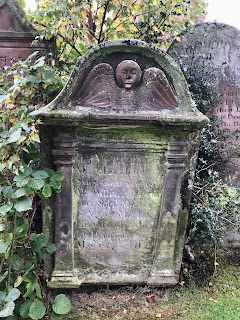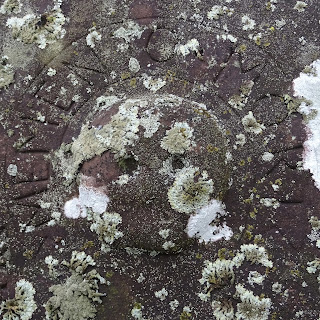Penpont is a small village in Dumfries
and Galloway. It was once an important
staging post for travellers, and on the main street it has a tearoom and
gallery that is still a popular stopping off point for cyclists, ramblers,
locals, and tourists.
The man who may have invented the
bicycle, Kirkpatrick Macmillan, lived a short distance from Penpont, and Joseph
Thomson, the explorer who gave his name to Thomson’s Gazelle, was born in the
village.
The Parish Church of Penpont, dominates
the skyline of the village, and stands on a low hill above the Scaur
Water. It was designed by Charles Howitt
and built in 1867 to replace the church that originally stood on the site. The design of the church is a large cruciform
in the Gothic style, with a tall tower and spire in the north-east corner. It was constructed using local pink
sandstone.
The gravestones in the graveyard date
mainly from the 17th to 18th centuries, though there were
some that dated from the 11th and 12th centuries. These, however, were removed and are now in Dumfries
Museum. Among those buried in the
graveyard is John Ross, a soldier who fought at the battle of Waterloo
defending the Quarte Bras Farmhouse.
I left the Skulferatu that accompanied
me on my walk in the shelter underneath a table top gravestone. The engraving on the gravestone was badly
worn, but it appeared to be the grave of one Patrick Boyle, who had died in the
1790s. In the gap underneath there were
bits of old, broken pottery, some spiders, and the lower branches of a nearby
holly bush. My Skulferatu joined them
there.
The coordinates for the location of the Skulferatu
are –
Latitude 55.231176
Longitude -3.811273
I used the following sources for
information –
Scotland’s Churches
Trust
Penpont, Keir and Tynron
Church
Penpont Heritage
Centre














